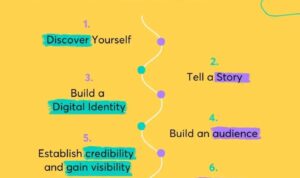Building a Strong Resume sets the stage for this enthralling narrative, offering readers a glimpse into a story that is rich in detail with American high school hip style and brimming with originality from the outset. This guide will take you on a journey through the key elements and formatting tips essential for creating a standout resume.
Importance of a Strong Resume: Building A Strong Resume

In today’s competitive job market, having a strong resume is crucial for standing out among other candidates and securing desirable positions.
Stand Out to Potential Employers
A well-crafted resume can make a candidate stand out to potential employers by highlighting their skills, experiences, and achievements in a clear and concise manner.
- Utilizing action verbs and quantifiable achievements can grab the attention of recruiters and showcase the candidate’s capabilities.
- Customizing the resume to each job application demonstrates a candidate’s genuine interest and suitability for the position.
- Including a professional summary or objective at the beginning can provide a quick overview of the candidate’s qualifications and career goals.
More Job Opportunities
A strong resume can open doors to more job opportunities by attracting the interest of hiring managers and recruiters who are seeking specific skills and experiences.
- Having a visually appealing and organized resume layout can make it easier for employers to quickly scan and identify key information.
- Showcasing relevant certifications, training, and education can demonstrate the candidate’s commitment to professional development and continuous learning.
- Highlighting transferable skills and accomplishments from previous roles can show employers the candidate’s potential to succeed in a new position.
Key Elements of a Strong Resume
Building a strong resume involves including key elements that showcase your skills and qualifications effectively. Tailoring your resume to the job description, using action verbs, and highlighting quantifiable achievements are crucial for standing out to potential employers.
Essential Sections in a Resume
- Contact Information: Include your name, phone number, email address, and location.
- Professional Summary: Briefly summarize your experience and skills relevant to the job.
- Work Experience: Detail your previous work positions, including job titles, companies, and dates.
- Education: List your educational background, degrees, and any relevant certifications.
- Skills: Highlight your key skills and abilities that are relevant to the job.
- Achievements: Showcase your accomplishments using specific examples and quantifiable results.
Importance of Tailoring a Resume to the Job Description, Building a Strong Resume
Tailoring your resume to the job description is essential because it shows employers that you have taken the time to understand their needs and how your skills align with the position. By customizing your resume for each job application, you can emphasize the most relevant experience and qualifications, increasing your chances of getting noticed.
Significance of Using Action Verbs and Quantifiable Achievements
Using action verbs in your resume helps to demonstrate your proactive approach and ability to take initiative in previous roles. Words like “managed,” “developed,” and “implemented” can make your accomplishments more impactful.
Additionally, highlighting quantifiable achievements, such as increasing sales by a certain percentage or completing a project ahead of schedule, provides concrete evidence of your success and contributions in previous positions. Employers are more likely to be impressed by specific, measurable results.
Formatting Tips for a Strong Resume

When it comes to creating a strong resume, the way you format and organize the information is just as important as the content itself. A well-formatted resume not only looks professional but also makes it easier for recruiters to quickly find the information they need. Here are some formatting tips to help you make your resume stand out:
Use of Fonts, Spacing, and Bullet Points
- Choose a clean and professional font like Arial, Calibri, or Times New Roman. Avoid using fancy or hard-to-read fonts.
- Use consistent spacing throughout your resume to make it easy to read. Stick to single or 1.15 line spacing and include ample white space to avoid clutter.
- Utilize bullet points to list your achievements, skills, and experiences. Bullet points help break up large chunks of text and make it easier for recruiters to scan your resume.
Visually Appealing Layouts
- Consider using a two-column layout to separate your contact information from the rest of the content. This makes it easier for recruiters to locate your details.
- Use bold headings and subheadings to highlight different sections of your resume. This helps recruiters navigate through your resume more efficiently.
- Incorporate a pop of color sparingly to draw attention to specific sections or make certain details stand out. Just make sure it complements the overall design.
Tailoring Your Resume for Different Roles
When applying for different job roles, it’s crucial to tailor your resume to highlight the skills and experiences that are most relevant to the position. This customization can greatly increase your chances of standing out to potential employers.
Highlighting Relevant Skills and Experiences
- Review the job description carefully to identify the key skills and qualifications required for the role.
- Focus on showcasing your relevant experiences that align with the job requirements.
- Use specific examples and achievements to demonstrate your abilities in those areas.
- Quantify your accomplishments whenever possible to provide measurable results.
Adapting the Resume to Different Industries or Career Levels
- Research the industry norms and expectations for resumes in the field you are applying to.
- Consider adjusting the language and terminology used in your resume to match the industry standards.
- For different career levels, emphasize the experiences and skills that are most relevant to the level of the position you are seeking.
- Tailor the resume format and content to align with the expectations of the specific industry or role.


